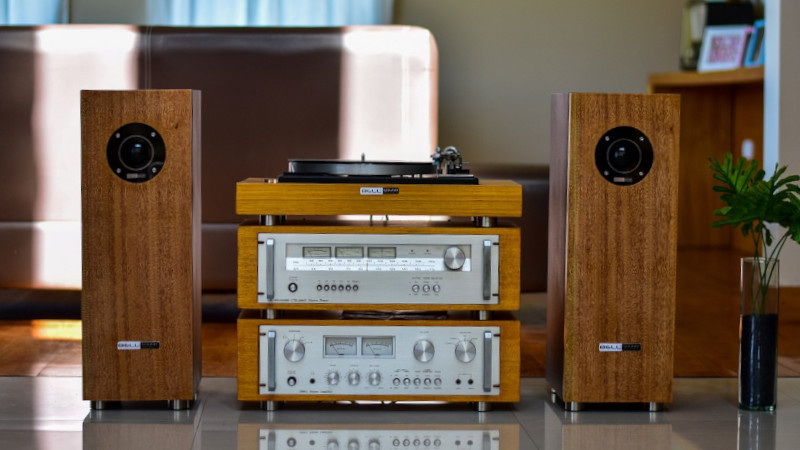What’s The Deal With Curved Speakers?
Most speakers are basically rectangles. They are simple (usually black) boxes that contain a number of drivers on one side. The side with the drivers sometimes have a bit of a different design. They’ll have rounded edges and sometimes the middle of the drivers will be slightly recessed. But, in general, the edges of the drivers will be attached at or near the front of the speaker. Some speakers are different. They are either curved or laid back. What’s the deal with that? Is there a reason that this design is used? Curved speakers are usually in a higher price bracket than other speakers. Are they better? What’s the deal with curved speakers? Let’s discuss!
Price Increase
Let’s start off with a disclaimer. I don’t design speakers. I don’t have any sort of direct experience with how much it costs to produce a speaker. But I’ve been in the industry for a long time and I’ve talked with a lot of people that create and sell speakers. They will tell you that a lot goes into pricing a speaker. Yes, some of it has to do with the cost of the materials and labor. That’s not all, of course. If people perceive a speaker to be “better” or “audiophile” then they can charge more. There are some things that manufacturers can do to signal consumers that their produce is worth extra money. They include (but are not limited to):
- Dual or triple binding posts
- Gloss black finish
- Unique driver material
- Size (bigger is better unless you are going for small and then you want REALLY small)
- Unique finishes (colors) or cabinet material (HDF over MDF, real wood veneers)
- Not a box
The last one addresses curved speakers. Since most speakers (and nearly every budget speaker) are a box, releasing a speaker that is curved or laid back immediately suggests that there is something special about your speaker. Special means expensive. We don’t know how much more it costs to produce a non-boxy speaker, but we are fairly sure it is more than covered by the increase in prices.

Performance Claims
Of course, to charge a premium for a set of speakers and have people think it is a “deal.” It can’t just be that they are curved. There must be a reason for the shape. While audiophiles will make a lot of claims, the most common reason for the curve is to time-align the drivers. People love to talk about time-aligning things in home theater. It generally doesn’t do anything and this is certainly the case here.
The idea is fairly simple. The speaker is curved so that the voice coils are physically in line with each other. The voice coils are, simply put, the part of the driver that creates the movement. You want all the drivers to be in line so that they are all perfectly in phase. This means that when one driver is pushing out, the other will be as well.

But there is more to phase than simply having all the voice coils physically in line. No matter what some people claim, physically aligning the drivers doesn’t really solve phase issues. The crossover in the speaker will create phase problems that will need to be solved electronically for example. In fact, not having the drivers physically aligned can be addressed electronically. Will physically aligning the drivers make that easier? Maybe. But it isn’t as if physically aligning the drivers solves anything that can’t be solved electronically.
The real question is whether or not you can hear the difference with time-aligned drivers. In general, you cannot. We’re sure you can find a way to make it audible, but in every one of the tests we’ve seen, the results were that time aligning the drivers didn’t make an audible difference.
Take Away
Are we saying that curved speakers aren’t worth the extra cost? Not at all! The fact that the manufacturer is paying attention to driver alignment sometimes indicates that they are trying to design a great-sounding speaker. Our problem is that some people will conflate curved speakers with quality. Our bigger problem is that the marketing will often explicitly say that the curved or laid-back design will provide a better sound. That’s simply not true. The deal with curved speakers is that they look cool. For some people, that justifies the extra cost. For us, we want to know that the manufacturer cared as much about how their speakers sound as how they look.


